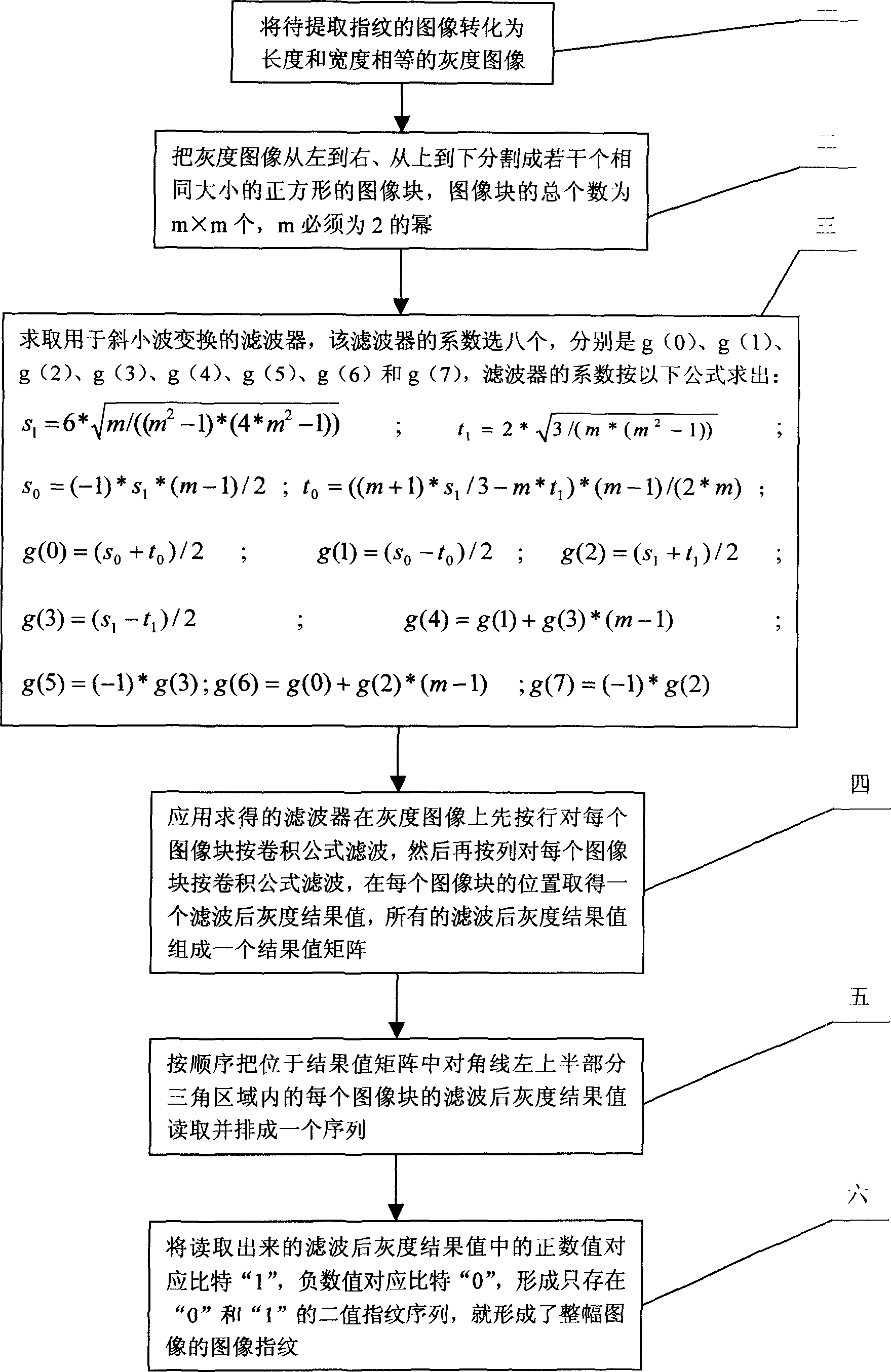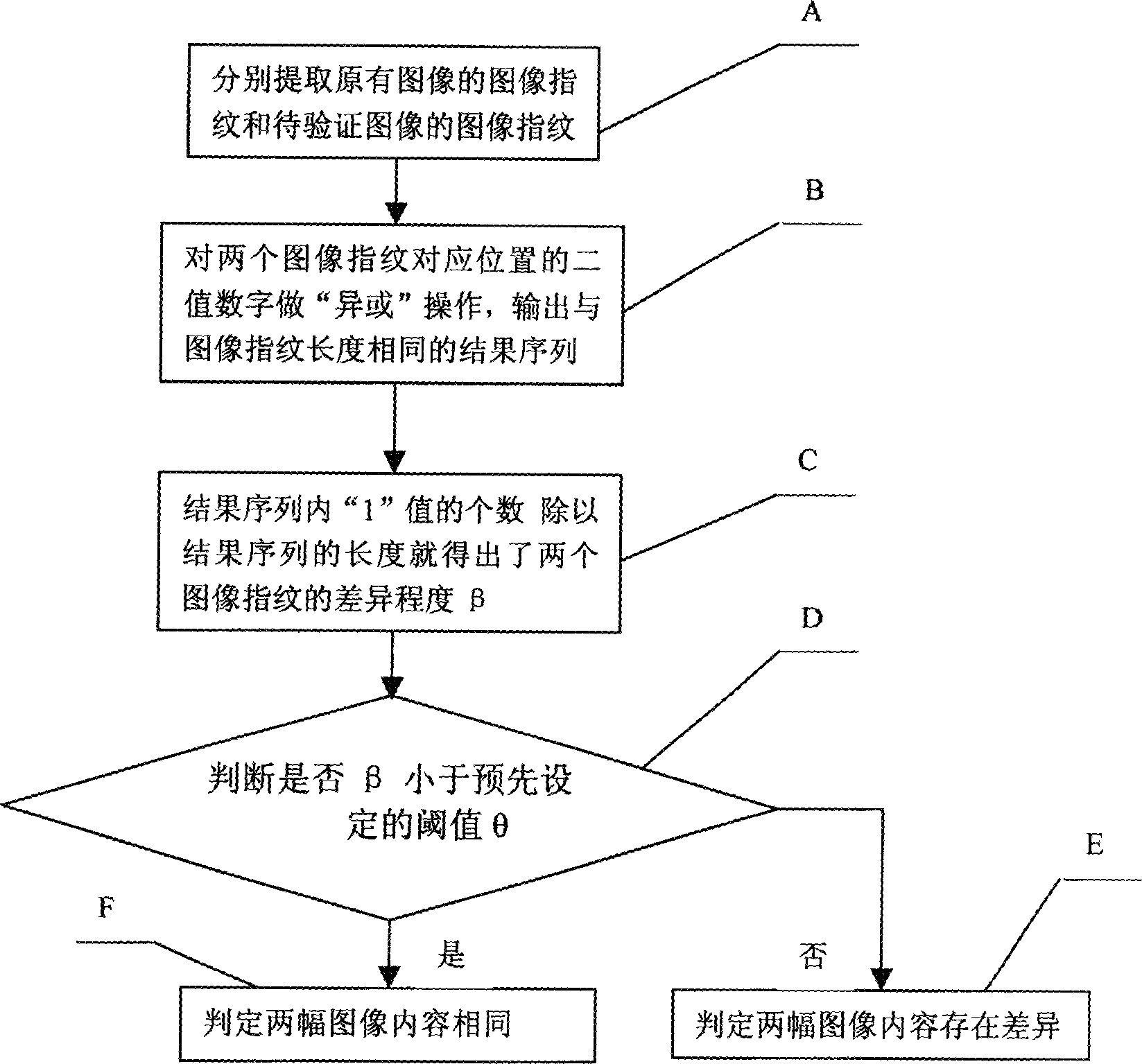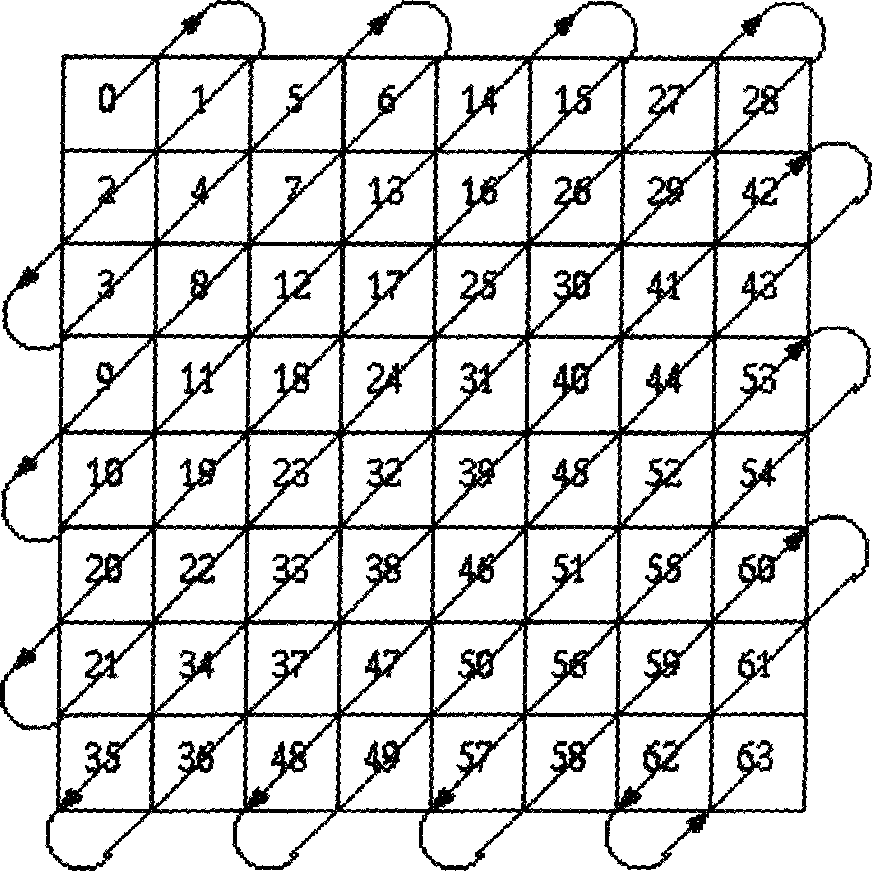Method of oblique wavelet image fingerprint extraction and authentication
A technology of image fingerprint and extraction method, which is applied in character and pattern recognition, instruments, computer components, etc., and can solve problems such as poor robustness of geometric transformation
- Summary
- Abstract
- Description
- Claims
- Application Information
AI Technical Summary
Problems solved by technology
Method used
Image
Examples
specific Embodiment approach 1
[0008] Specific implementation mode one: the following combination figure 1 This embodiment will be specifically described. This embodiment is realized by the following steps: 1. Convert the image of the fingerprint to be extracted into a grayscale image with equal length and width; 2. Divide the grayscale image into several squares of the same size from left to right and from top to bottom image block, the total number of image blocks is m×m, and m must be a power of 2; 3. Find the filter used for oblique wavelet transform, and the coefficients of this filter are selected eight, which are g(0 ), g(1), g(2), g(3), g(4), g(5), g(6) and g(7), the coefficients of the filter are calculated according to the following formula: s 1 = 6 * m / ( ( m 2 - ...
specific Embodiment approach 2
[0009] Specific implementation mode two: the following combination figure 2 This embodiment will be specifically described. This embodiment is realized by the following steps: A. extract the image fingerprint of the original image and the image fingerprint of the image to be verified respectively; A result sequence with the same length; C. Dividing the number of "1" values in the result sequence by the length of the result sequence yields the difference β between the two image fingerprints; D. Judging whether β is less than the preset threshold θ; E. If the result is no, it is determined that the contents of the two images are different; F, if the result is yes, it is determined that the contents of the two images are the same. The following is an image fingerprint demonstration example of oblique wavelet transform, Figure 4 is an original image, Figure 5 yes Figure 4 After JPEG lossy compression, it is obvious that the two images are basically the same visually. Af...
specific Embodiment approach 3
[0010] Specific implementation mode three: the following combination image 3 This embodiment will be specifically described. The difference between this embodiment and Embodiment 1 is that in Step 5, the filtered grayscale result values of the image blocks are read and arranged in a sequence in the following order: starting from the upper left corner of the result value matrix to circle in a zigzag Zigzag to the bottom right to read the grayscale result value. Since the low-frequency part of the grayscale image signal is concentrated on the left and upper part of the result value matrix, and the frequency gradually increases toward the lower right, according to this embodiment, the read digital frequency changes gently, and the compression performance is better. image 3 The digital serial number in is the scanning sequence, which corresponds to the frequency range. In this embodiment, it is best to select 0 to 33 as the low frequency part of the image signal to be read as...
PUM
 Login to View More
Login to View More Abstract
Description
Claims
Application Information
 Login to View More
Login to View More - R&D
- Intellectual Property
- Life Sciences
- Materials
- Tech Scout
- Unparalleled Data Quality
- Higher Quality Content
- 60% Fewer Hallucinations
Browse by: Latest US Patents, China's latest patents, Technical Efficacy Thesaurus, Application Domain, Technology Topic, Popular Technical Reports.
© 2025 PatSnap. All rights reserved.Legal|Privacy policy|Modern Slavery Act Transparency Statement|Sitemap|About US| Contact US: help@patsnap.com



